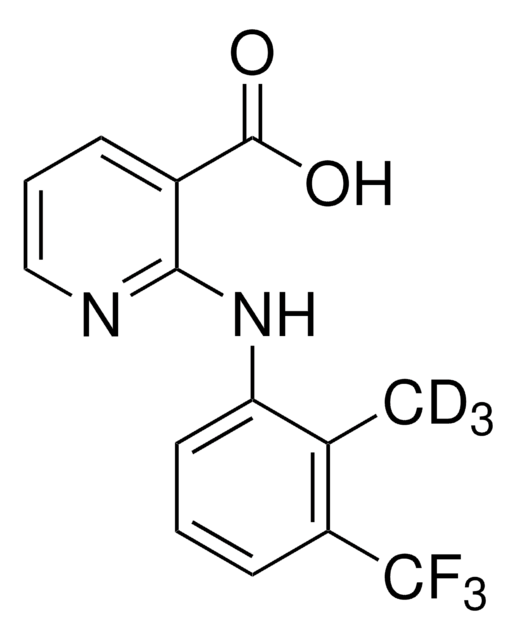M2017
Mazindol
≥98% (TLC), powder
Synonyme(s) :
5-(4-Chlorophenyl)-2,5-dihydro-3H-imidazo[2,1-a]isoindol-5-ol
About This Item
Produits recommandés
Pureté
≥98% (TLC)
Forme
powder
Contrôle du médicament
USDEA Schedule IV; Home Office Schedule 3; psychotrope (France); kontrollierte Droge in Deutschland; regulated under CDSA - not available from Sigma-Aldrich Canada; psicótropo (Spain); Decreto Lei 15/93: Tabela IV (Portugal)
Couleur
white
Solubilité
DMSO: 10 mg/mL
Auteur
Wyeth
Chaîne SMILES
OC1(C2=CC=C(Cl)C=C2)C3=CC=CC=C3C4=NCCN14
InChI
1S/C16H13ClN2O/c17-12-7-5-11(6-8-12)16(20)14-4-2-1-3-13(14)15-18-9-10-19(15)16/h1-8,20H,9-10H2
Clé InChI
ZPXSCAKFGYXMGA-UHFFFAOYSA-N
Informations sur le gène
human ... SLC6A2(6530) , SLC6A3(6531) , SLC6A4(6532)
rat ... Htr1a(24473) , Htr2a(29595) , Slc6a3(24898) , Slc6a4(25553)
Vous recherchez des produits similaires ? Visite Guide de comparaison des produits
Actions biochimiques/physiologiques
Caractéristiques et avantages
Mention d'avertissement
Danger
Mentions de danger
Conseils de prudence
Classification des risques
Acute Tox. 2 Oral - Acute Tox. 3 Dermal - Acute Tox. 3 Inhalation
Code de la classe de stockage
6.1A - Combustible acute toxic Cat. 1 and 2 / very toxic hazardous materials
Classe de danger pour l'eau (WGK)
WGK 3
Équipement de protection individuelle
Eyeshields, Faceshields, Gloves, type P2 (EN 143) respirator cartridges
Certificats d'analyse (COA)
Recherchez un Certificats d'analyse (COA) en saisissant le numéro de lot du produit. Les numéros de lot figurent sur l'étiquette du produit après les mots "Lot" ou "Batch".
Déjà en possession de ce produit ?
Retrouvez la documentation relative aux produits que vous avez récemment achetés dans la Bibliothèque de documents.
Active Filters
Notre équipe de scientifiques dispose d'une expérience dans tous les secteurs de la recherche, notamment en sciences de la vie, science des matériaux, synthèse chimique, chromatographie, analyse et dans de nombreux autres domaines..
Contacter notre Service technique








